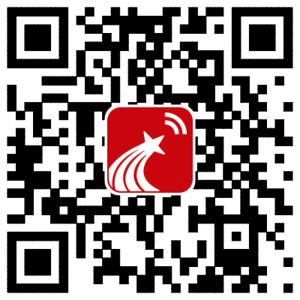限定内容
主题
- 17,111 篇 函数
- 6,440 篇 三角函数
- 5,993 篇 二次函数
- 5,838 篇 高中数学
- 4,501 篇 集合
- 4,316 篇 自然数
- 3,690 篇 数学
- 3,644 篇 应用
- 3,014 篇 一次函数
- 2,957 篇 划分
- 2,901 篇 图
- 2,840 篇 不等式
- 2,788 篇 初中数学
- 2,546 篇 导数
- 2,395 篇 中国
- 2,350 篇 函数图象
- 2,295 篇 单调性
- 2,258 篇 数形结合
- 2,145 篇 定义域
- 1,833 篇 高考
机构
- 1,800 篇 山东大学
- 1,651 篇 浙江大学
- 1,608 篇 北京大学
- 1,576 篇 武汉大学
- 1,368 篇 哈尔滨工业大学
- 1,347 篇 清华大学
- 1,345 篇 吉林大学
- 1,291 篇 华东师范大学
- 1,242 篇 四川大学
- 1,231 篇 华中科技大学
- 1,223 篇 上海交通大学
- 1,190 篇 北京师范大学
- 1,161 篇 西安电子科技大学
- 1,128 篇 南京大学
- 1,123 篇 大连理工大学
- 1,033 篇 东南大学
- 1,025 篇 中国地质大学
- 983 篇 中国科学院大学
- 962 篇 重庆大学
- 919 篇 南京师范大学
文献订阅
- 基于小波概率密度函数的风电机组故障混合检测方法研究
- 广东省风力发电有限公司 广东广州510630
-
来源
 维普期刊数据库
维普期刊数据库
 万方期刊
万方期刊
 中国学术期刊网络出版...
详细信息
中国学术期刊网络出版...
详细信息
- 传播的痕迹:固原北魏漆棺孝子图的再观察
- 中央美术学院人文学院 北京100102
-
来源
 维普期刊数据库
维普期刊数据库
 中国学术期刊网络出版...
中国学术期刊网络出版...
 万方期刊
详细信息
万方期刊
详细信息
- 基于代数和几何组合相似度的区间值系统不确定性度量
- 安徽职业技术大学计算机与信息技术学院 安徽合肥230011湖北汽车工业学院智能网互联汽车学院 湖北十堰442002
-
来源
 维普期刊数据库
维普期刊数据库
 中国学术期刊网络出版...
中国学术期刊网络出版...
 中国学术期刊网络出版...
详细信息
中国学术期刊网络出版...
详细信息
- 基于注意力机制的双分支图相似度计算方法
- 南京大数据集团有限公司 江苏南京210000南京智能计算科技发展有限公司 江苏南京210000东南大学 江苏南京210096集美大学 福建厦门361021
-
来源
 维普期刊数据库
维普期刊数据库
 中国学术期刊网络出版...
中国学术期刊网络出版...
 万方期刊
详细信息
万方期刊
详细信息
- 《平行山水图》
- 永川水韵书香咖啡店
-
来源
 维普期刊数据库
维普期刊数据库
 中国学术期刊网络出版...
详细信息
中国学术期刊网络出版...
详细信息
- 一种矩阵列变换对应的图变化及其Leavitt路代数的不变基性质
- 安徽大学理论数学中心 安徽合肥230601安徽大学数学科学学院 安徽合肥230601湖北大学数学与统计学学院 湖北武汉430062
-
来源
 维普期刊数据库
维普期刊数据库
 万方期刊
万方期刊
 中国学术期刊网络出版...
详细信息
中国学术期刊网络出版...
详细信息
- 基于磁共振DSC-PWI原始图的侧支循环分级在急性前循环大血管闭塞性脑梗死患者中的应用价值
- 梧州市工人医院放射科 梧州543001广西壮族自治区妇幼保健院放射科 南宁530000
-
来源
 维普期刊数据库
维普期刊数据库
 中国学术期刊网络出版...
详细信息
中国学术期刊网络出版...
详细信息
- 融合对比学习与轻量化图网络在逻辑推理应用
- 华南理工大学计算机科学与工程学院 广州510006阿里云智能集团 杭州310051东莞市松山湖北区学校 广东东莞523429
-
来源
 维普期刊数据库
维普期刊数据库
 中国学术期刊网络出版...
中国学术期刊网络出版...
 万方期刊
详细信息
万方期刊
详细信息

